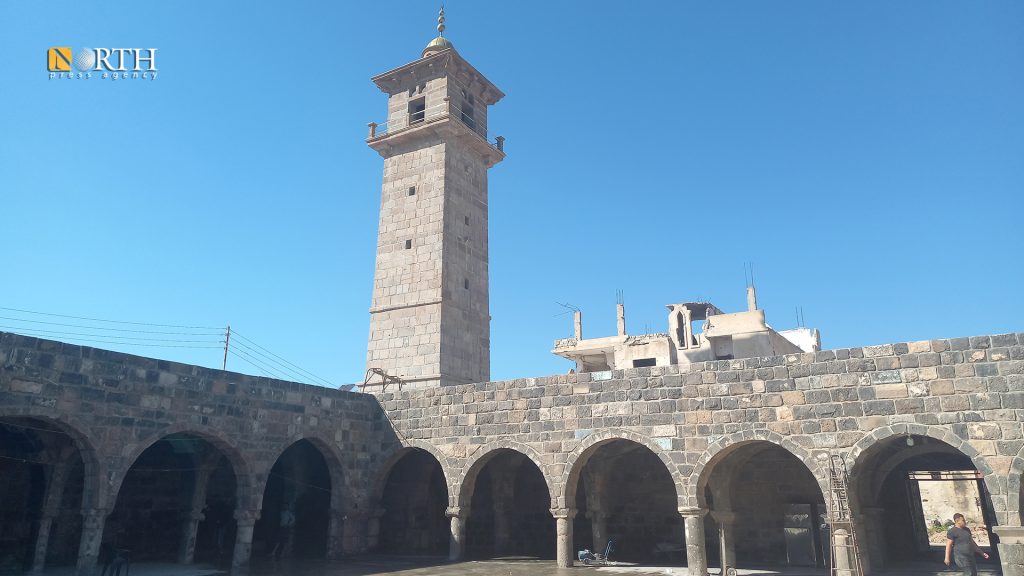By Ihsan Muhammad
DARAA, Syria (North Press) – March 15 marks the thirteenth anniversary of the start of the protests against the Syrian government in Daraa Governorate, southern Syria. Even though a long time has passed, Daraa remains out of the influence of the government, despite regaining control in the summer of 2018 with the support of Russia and Iran.
Beginning
In late February 2011, the Syrian government forces arrested a group of children from the al-Arbaeen School in the city of Daraa for writing anti-government slogans such as “People want the regime to leave”, mimicking slogans raised by demonstrators in countries experiencing protests at that time, such as Egypt, Libya, and Tunisia.
The children were taken to the Syrian government’s Intelligence branch in Daraa. When the children’s families demanded to know their fate, the head of the branch dismissed them and told them to forget about their children, and give birth to others. This incident paved the way for popular demonstrations in Daraa, according to activists.
Bashar al-Haj Ali, a politician from the Syrian opposition, says the Syrian people showed a strong determination for change and freedom during the revolution that began in Daraa in 2011.

Al-Omar Mosque in Daraa Governorate, southern Syria, where the first protests started in 2011 – North Press
He told North Press that “despite the deterioration of the humanitarian and economic conditions and the shifts in the conflict, the Syrians’ desire for change is still present.”
Daraa after settlement
The political reality on the ground in Daraa today is extremely complex, making it unstable.
In July 2018, the armed factions of the Syrian opposition and the government forces reached a ceasefire agreement mediated by Russia in the opposition-held areas in Daraa. Under the deal, the armed factions agreed to hand over their weapons in exchange for staying in Daraa, and those who opposed the agreement were sent to Idlib Governorate, northwestern Syria, which is under the control of Hayat Tahrir al-Sham (HTS – formerly al-Nusra Front).
The settlement allowed thousands of fighters to remain in Daraa and keep their personal weapons. At the same time, it allowed the government forces, with Iran’s support, to establish multiple posts. This was a natural result of the suspension of confrontations and the reduced military effectiveness of the opposition factions following the surrender of heavy weapons as stipulated by the settlement.
Husam al-Barm, a journalist and researcher, told North Press that Daraa has suffered from deteriorating conditions after the settlement, despite promises by the Syrian government to provide many administrative and political privileges, but none were achieved.
He says that the spread of drugs, the lack of security, and the presence of Iranian-backed militias are among the most prominent challenges facing Daraa after 13 years of the Syrian war.
He stresses the inability of the security apparatus of the Syrian government to fully impose its control over Daraa or fulfill its duty to maintain security and stability.
Daraa on edge again
Daraa is currently witnessing a state of tension, instability, and a lack of public services, making it susceptible to constant change.
An opposition leader, who preferred not to be named, expects that popular protests against the Syrian government will happen again, especially after it failed to achieve stability and security in the city.
The leader points out that contrary to expectations, the security apparatus recruited former members of the opposition factions to carry out assassinations against its opponents, ensuring the absence of any opposition in Daraa.
He told North Press that there is no family in Daraa that has not been affected by the actions of the security apparatus, whether by killing, injuring, or arresting one of its members, not to mention those forcibly disappeared.
The leader believes that Daraa is on the verge of widespread protests that start on the thirteenth anniversary of the inception of the Syrian revolution and will be larger than before.
Overall, the situation in Daraa remains complex, and despite major challenges, it continues to resist the government forces’ complete control, as is the case in Suwayda Governorate, southern Syria, and other Syrian cities.

